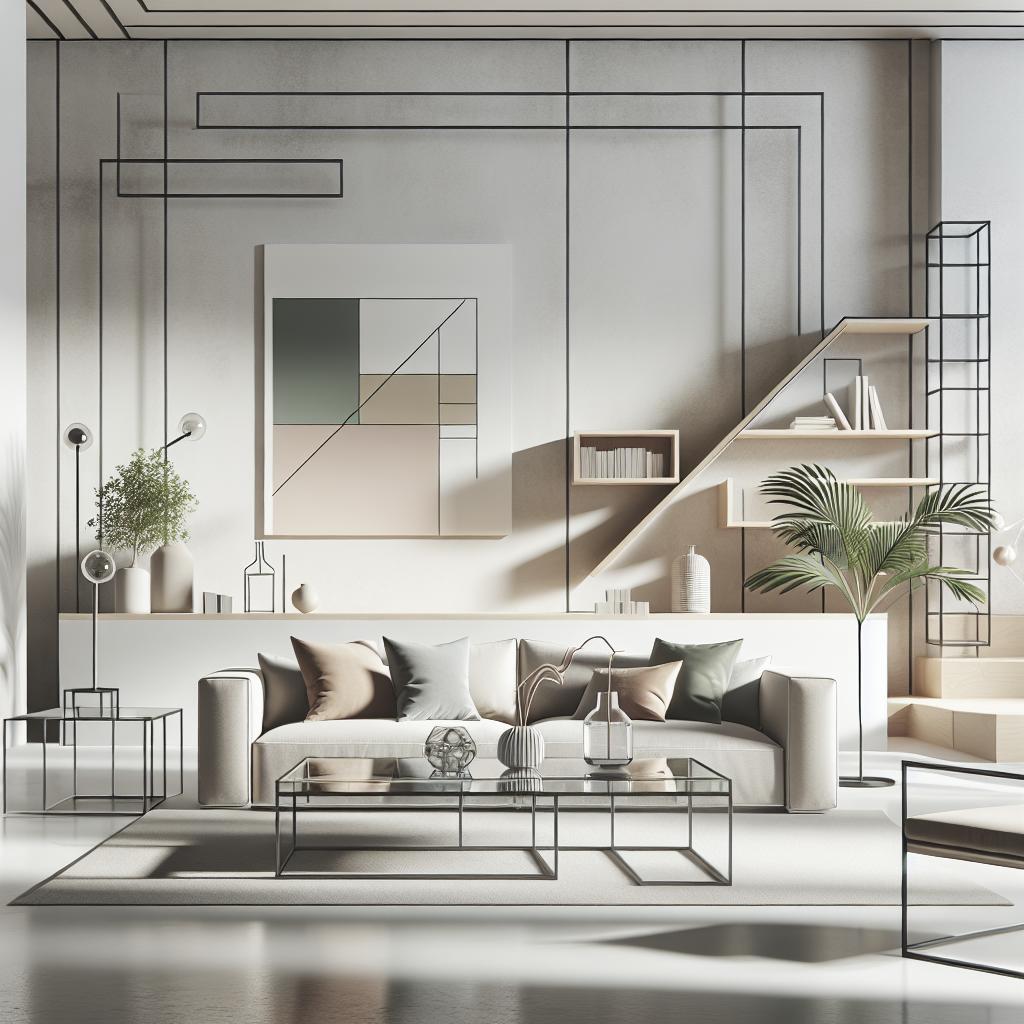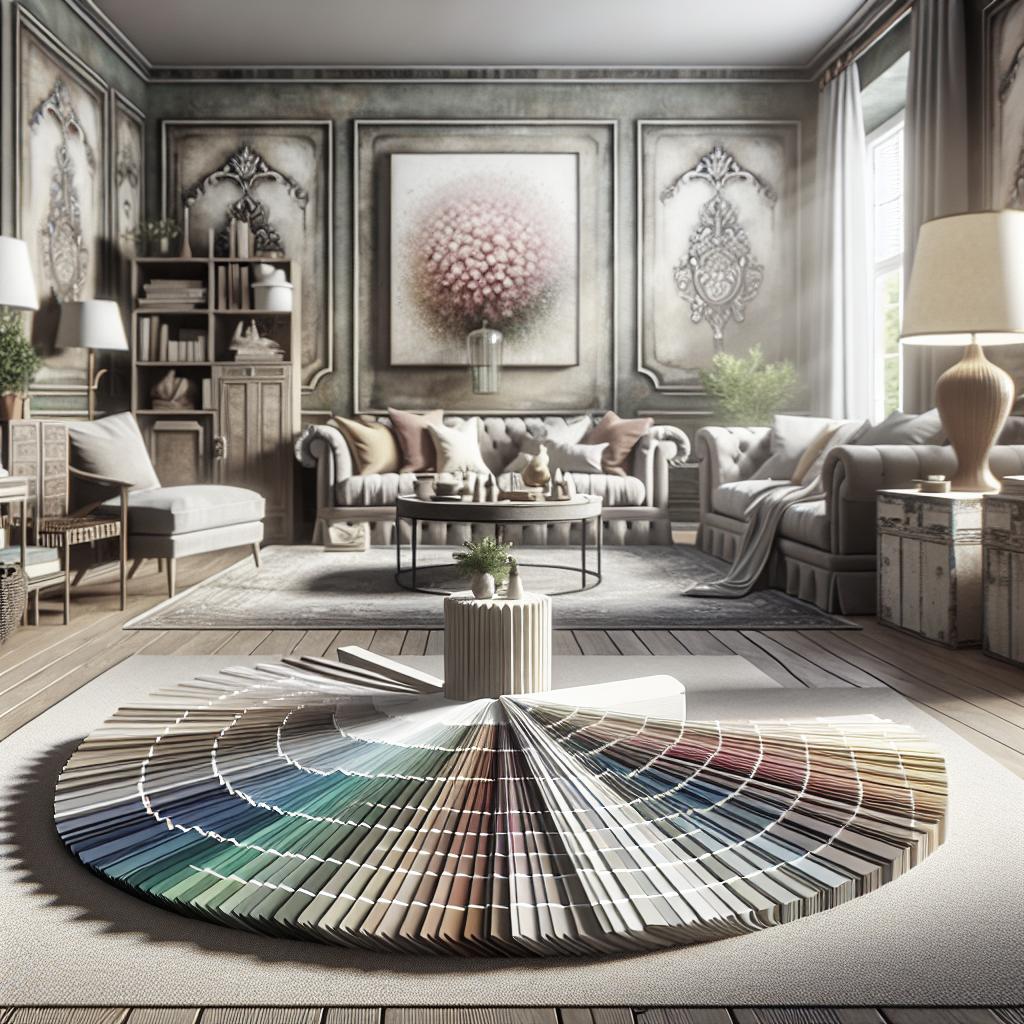Lighting is often an overlooked yet critical element in interior design. It can transform a space’s ambiance, enhance colors, and even influence mood. In this comprehensive guide, we delve into the profound role of lighting in crafting beautiful and functional interiors. We’ll explore scientific insights into how lighting affects human emotions, the variety of lighting types used in design, and the balance between natural and artificial light. Moving beyond aesthetics, we’ll also discuss how lighting impacts color perception and texture enhancement, offering tips on creating depth and highlighting unique patterns. Understanding the specific lighting needs of different areas, from task lighting for productivity to ambient lighting for relaxation, is crucial. Additionally, we’ll guide you through selecting the perfect fixtures, considering style, size, and energy efficiency. By mastering these lighting principles, you can elevate your interior design skills and create spaces that are not only visually appealing but also uniquely functional. ## Understanding the Role of Lighting in Interior Design ### The Science Behind Lighting and Mood Lighting is not just a tool for improving visibility; it is also a powerful influencer on mood and emotion. Scientific studies have shown that different types of lighting can affect our psychological state. For instance, warm lighting tends to foster a sense of coziness and relaxation, making it ideal for living spaces and bedrooms. On the other hand, cooler lighting is known to increase alertness and concentration, often used in offices and study areas to boost productivity. Natural light, in particular, has been credited with enhancing mood and promoting well-being. Exposure to sunlight triggers the release of serotonin in the brain, a hormone associated with happiness. Incorporating ample natural light can significantly enhance the atmosphere of a room, providing not only visual benefits but also psychological ones. ### Types of Lighting in Interior Design In interior design, lighting is generally divided into three main types: ambient, task, and accent lighting. Each type serves a specific purpose and contributes differently to the overall aesthetic and functionality of a space. Ambient lighting is the primary lighting source, providing a uniform level of illumination throughout the area. Its role is to ensure visibility and safety while setting the desired mood. Task lighting focuses on providing ample lighting for particular activities such as reading, cooking, or working. It is usually brighter than ambient lighting to avoid eye strain during these tasks. Accent lighting, on the other hand, is used to highlight specific elements within a room, such as artwork or architectural details, adding drama and visual interest to a space. ### Balancing Natural and Artificial Light Sources Successfully balancing natural and artificial lighting is a key component of effective interior design. While natural light is preferred for its warmth and energy efficiency, it is not always available in sufficient quantities. Designers must creatively integrate artificial lighting to fill in the gaps without overwhelming the harmony of the space. One practical approach is to maximize the use of mirrors and reflective surfaces, which amplify natural light and distribute it more evenly across a room. Additionally, the strategic placement of windows and the use of lighter colors can enhance the presence of natural light. Artificial lighting can be layered and adjusted as needed, with dimmers and smart lighting systems allowing for precision control over the ambiance and mood. ## The Impact of Lighting on Color and Texture ### Enhancing Color Schemes with Lighting Lighting significantly influences how colors are perceived within a space. The temperature and intensity of light can either enhance or distort colors, making it essential to choose lighting that complements the room’s color palette. For example, warm lighting can amplify rich reds, oranges, and yellows, while cooler lighting may dull them. In spaces where color accuracy is crucial, such as artist studios or retail environments, daylight-balanced bulbs might be used to mimic natural light, ensuring true-to-life color representation. Designers often conduct tests with different lighting setups to observe how light interacts with colors before finalizing a design scheme. ### Creating Depth and Dimension with Light Lighting can be employed to create a sense of depth and dimension in interior spaces, an important aspect of creating a dynamic and inviting environment. Techniques such as uplighting, downlighting, and wall washing can alter perceptions of space, making it appear larger or more intimate. Uplighting, for instance, directs light towards the ceiling, creating an illusion of height and openness. Conversely, downlighting casts light directly downwards, which can focus attention and create zones within a larger area. Using multiple layers of light at different heights and angles helps to break up flat spaces and provide visual depth. ### Highlighting Textures and Patterns Texture and pattern play a vital role in the tactile and visual richness of an interior environment, and lighting is key in accentuating these elements. Strategically placed light can highlight the grooves and details of textures, bringing them to life and adding interest to a room. Wall grazers are excellent for emphasizing vertical textures in materials like brick or wood. Meanwhile, spot or track lighting can focus on specific patterns or designs, such as a decorative wallpaper or a textured rug, creating shadow play that accentuates these features. By considering the interplay between light and surface, designers can craft spaces with enhanced depth and dimension. ## Functional Lighting for Different Spaces ### Task Lighting for Work and Study Areas In work and study environments, adequate task lighting is crucial for maintaining focus and productivity. The goal is to provide bright, concentrated light on the work surface without casting harsh shadows or causing glare. Adjustable desk lamps are a popular choice, allowing for customization according to individual needs. Under-cabinet lighting in kitchens serves a similar function, ensuring that countertops are well-lit for meal preparation. The positioning and angle of task lighting should be carefully planned to ensure that it is functional without being intrusive, providing balance to the room’s overall lighting scheme. ### Ambient Lighting for Living and Relaxation Spaces Ambient lighting is the primary source of illumination in living and relaxation areas, contributing to the overall mood and atmosphere. Soft and diffuse lighting is generally preferred in these spaces to create a comfortable and inviting ambiance. Ceiling fixtures, wall sconces, and floor lamps with shades that diffuse light are ideal for producing a warm, welcoming glow. Incorporating dimmers or smart lighting solutions can add flexibility, allowing occupants to adjust the brightness to suit different times of day or activities. As living spaces often serve multiple purposes, the ability to customize ambient lighting can enhance both functionality and comfort. ### Accent Lighting for Showcasing Art and Decor Accent lighting is often used to add drama and focus to specific elements within a room, such as artwork, architectural features, or decorative objects. This type of lighting is typically more intense and narrowly focused than ambient lighting, drawing the eye to the highlighted areas. Picture lights, spotlights, or track lighting systems can effectively accentuate art and decor pieces, ensuring they remain the focal point of the room. By strategically placing accent lighting, designers can create layers of light that add visual interest and elevate the aesthetic appeal of a space. ## Choosing the Right Light Fixtures ### Selecting the Appropriate Fixture Style The style of light fixtures plays a significant role in the overall aesthetic of a room. Fixtures should complement the design theme and architecture, acting as both functional elements and design statements. For instance, a sleek, minimalist fixture could enhance a modern interior, while a chandelier might add elegance and sophistication to a traditional setting. When selecting fixtures, consider not just the style but also the materials and finishes. These elements can reinforce the room’s decor, creating a cohesive and harmonious look. It’s important to evaluate the room’s existing architectural features and select fixtures that enhance, rather than compete with, these elements. ### Considering Fixture Size and Placement The size and placement of lighting fixtures are key to their effectiveness and visual impact. Oversized fixtures in small rooms can overwhelm the space, while undersized fixtures in large areas may appear lost and ineffective. It’s essential to select fixtures proportional to the room size and the specific area they will illuminate. Placement should be strategic, ensuring that lighting is distributed evenly and highlights the space’s essential features. In dining areas, for example, a fixture should be centered over the table at a height that provides adequate illumination without obstructing the view. Thoughtful placement ensures that fixtures provide the desired functional and aesthetic benefits. ### Exploring Energy-Efficient Lighting Options As sustainability becomes a priority in design, exploring energy-efficient lighting options is essential. LED lighting has gained popularity due to its long lifespan, low energy consumption, and versatility. LEDs are available in various color temperatures and styles, providing flexibility for different design needs. Smart lighting systems also enhance energy efficiency, allowing users to control lighting remotely and optimize their energy use. The integration of sensors and automation can further reduce energy usage by adjusting lighting based on occupancy and natural light levels. By prioritizing energy-efficient options, designers contribute to sustainable practices while reducing operational costs. ## Final Thoughts “`html
| Aspect | Highlights |
|---|---|
| Lighting and Mood | Scientific insights on lighting types influencing mood; balance of natural and artificial light |
| Impact on Color and Texture | Enhancing color schemes; creating depth; highlighting textures and patterns |
| Functional Lighting | Task lighting for specific activities; ambient lighting for relaxation; accent lighting for decor |
| Choosing Light Fixtures | Fixture style and placement considerations; energy-efficient options |
“` In the dynamic world of interior design, lighting serves as a vital tool in shaping both the aesthetic and functional aspects of spaces. Through understanding the science behind lighting preferences, designers can create environments that resonate with the desired mood and purpose. As you navigate the myriad choices in lighting, considering color impact, fixture selection, and sustainability will ensure you create interiors that are both beautiful and impactful.


